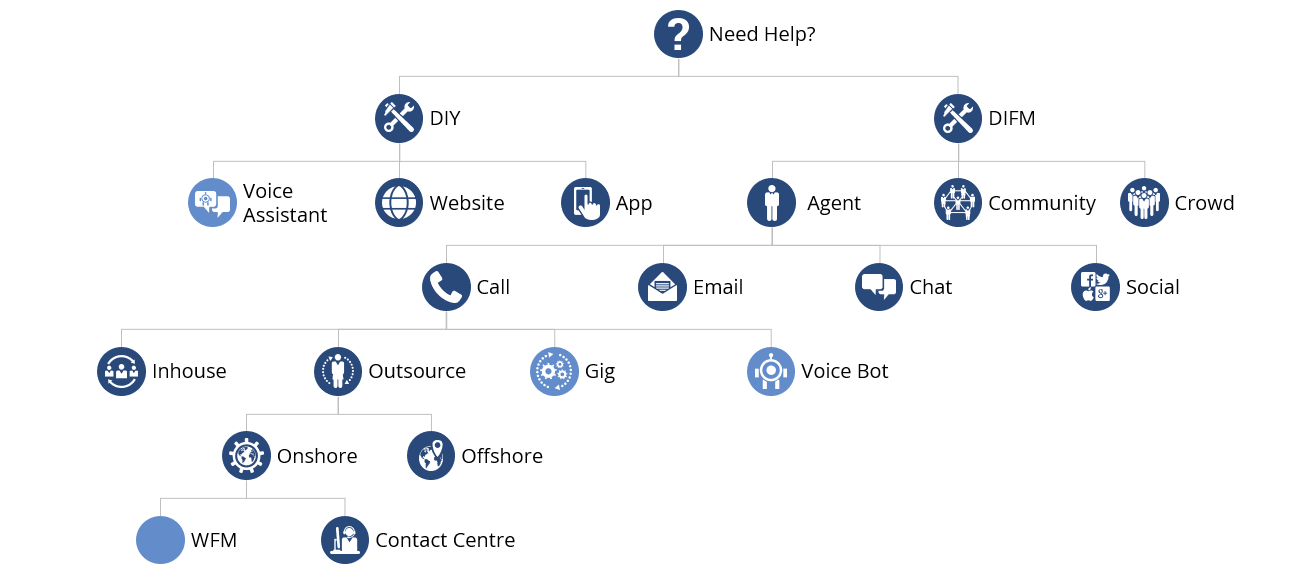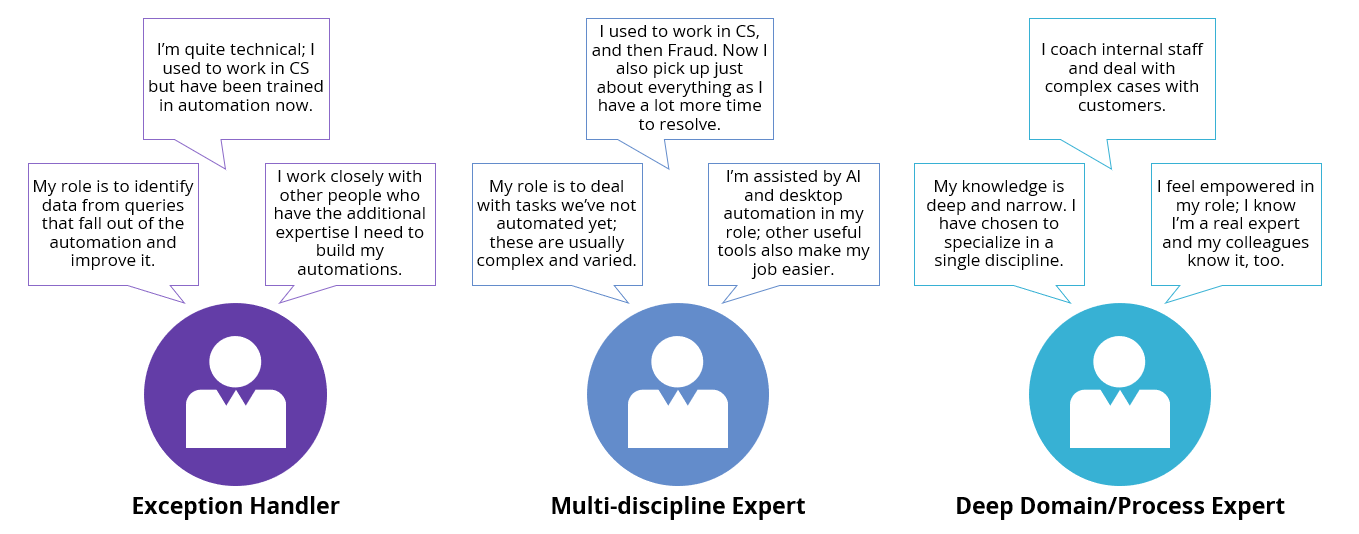Change is hard and constant, especially if you work in customer service. It’s not just the processes that must be regularly updated, it’s determining who is actioning them, on which shifts, through which customer contact channel and via which technology. It’s no wonder the future of the contact center is a moving target.
The purpose of the contact center is to provide help – but, of course, it’s not the only route a customer can take to get assistance. Indeed, the route a customer takes is usually determined by the type of customer they are. A do-it-yourself (DIY) customer is quite different than a do-it-for-me (DIFM) customer. Understanding the types of customer you are serving is just the tip of the iceberg. You also need to consider which channel to use, where the agent works – at the office or at home – and whether the agent is a person or simply a bot.
Providing the Right Customer Support
Here is a basic flow showing just the many possible paths an organization may take to deal with a customer query.

Figure 1: The Complexity of Providing the Right Customer Support
Needless to say, resolving even the most common customer queries can be daunting, with so many options involving both humans and technology. To better understand how to make real change, enterprises must consider four levers: the customer, the agent, technology and channels.
The Four Levers to Improve the Contact Center
1. Prepare for changing customer expectations
As mentioned earlier, the customer is evolving. Expectations are constantly changing – even before COVID drove the traditional consumer into more digital experiences. External factors and the ones you control yourself mean the customer is always the wild card. Of course, treat them badly, and you won’t have a “business” at all. So, while they may present the greatest challenge to planning, you must still plan, pivot and evolve your “Need Help” function to provide the support they demand.
2. Support the agent’s evolving role
Though customer service agents sit at the front of the customer engagement effort, they often are some of the least well-paid individuals in the enterprise. And their work is becoming increasingly complex. One reason is due to the impact of self-service capability and automation that eliminates transactional queries from engagements. This renders almost every query into an exception or a task the automation was not able to complete. The agent, then, is left to problem solve on the fly, using the tools and capabilities available while remaining focused on a positive outcome for the customer. Give agents the training they need to keep pace with this fast moving and complex service delivery.
A new set of roles will soon become the norm, evolving from the traditional agent role. Meet the Exception Handler, the Multi-discipline Expert and the Deep Domain Expert who will play critical parts in supporting the contact centre in the future.

Figure 2: Three Main Role Types in the Contact Center of the Future
3. Build multiple customer channels
It used to be that a customer could contact you via phone or email, but the channels have multiplied and now range from the traditional voice call to a crowdsourced answer via customer service software like Limitless to community platforms like Standing on Giants. Many of the channels available can be answered either using people or technology, such as voice and chatbots using natural language processing (NLP).
The biggest change to the contact center in more recent times is the rise of asynchronous messaging functions, which historically were provided by platforms like SMS and messenger and are now provided by social media platforms like Instagram and WhatsApp, not to mention the increasingly popular home voice assistants, like Amazon’s Alexa and Google Home.
4. Invest wisely in contact center technology
Without careful technology investment, the contact center will very easily become monolithic. If we thought change was happening fast before COVID, we now know that most business have gone through about four years of change in only about four months’ time. This rapid change has proven that the enterprise of old can indeed shift course, and, in some instances, create new business models overnight to survive in uncertain times. Much of this change has been enabled through technology. Recognizing this fact will be critical over the next 36 months.
New technology solutions that automate, simplify or eliminate repetitive queries and agent actions will become increasingly important, as will the ability to find answers and solve problems quickly without the support of colleagues. The use of conversational AI-assisted search functions like Humley’s or machine-learning model platforms like Re:infer will not only assist with efficiency but also provide the direction for removing contacts altogether through conversation mining.
I mentioned earlier that the agent’s role is becoming more difficult. This means agent assistant technologies that either do something for or provide proactive help to the human agent will become even more important in the future, especially if agents are working from home or are part of a gig workforce. Take, for example, an agent assistant that can complete hold time to get help or complete a task (check out NEVA here from NICE). Imagine what that would do to reduce your overall handling time and increase customer satisfaction.
Using speech recognition technology to meet compliance (i.e., software that confirms key phrases in a conversation via software like Recordsure) also can provide new insights into customer demand and problems. Conversational AI in your interactive voice response (IVR) technology can provide a 24/7 route via the traditional voice channel to serve your customers using a platform like OneReach.ai
Contact centers are under huge pressure to deliver. They are the front door to many organizations, and change is constant.
Don’t get lost in trying to understand what you could do. Speak with ISG Automation to understand what you should do.
